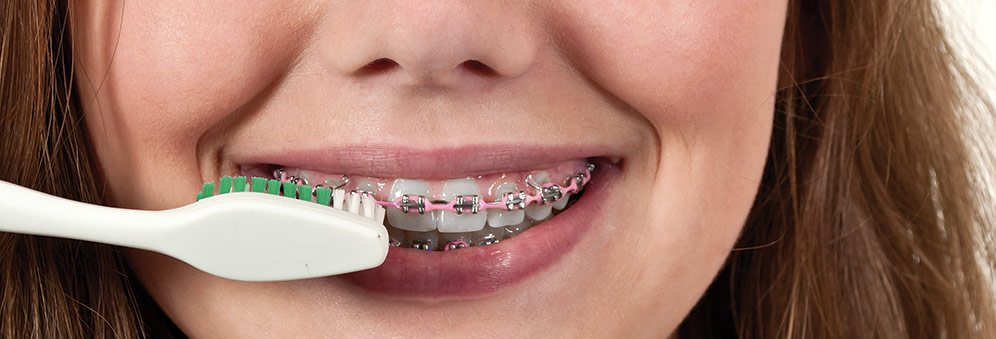Dental braces and periodontal disease
There's no predisposition for children wearing braces to periodontal disease - as long as they follow the orthodontists’ brushing instructions carefully.
How can you be sure that you’re cleaning your teeth properly if there is a load of ironwork in the way? And are there any connections between wearing teeth-straightening braces and having a predisposition to developing periodontal - or gum - disease?
Keen to find out the answers, Dr Dave Dymock, Director of Undergraduate Education in the Faculty of Medicine and Dentistry, teamed up with a number of orthodontists in the Dental School and Hospital, and with the help of a 24-strong cohort of brace-wearing children, started a research project to investigate.
Funded by the British Orthodontic Society, the research team used molecular technologies to monitor the plaque environment of the mouths of children undergoing orthodontic treatment. By taking various samples at four stages during the treatment, the bacterial composition of plaque, and how this changed over time, was monitored.
Remarkably, at least 1000 species of bacteria are known to be able to reside within the oral cavity. However, on average, individuals carry between 50 and 200 species, and some people naturally carry more pathogens in their plaque than others.
Samples were taken at specific times during the orthodontic treatment: when the brace was fitted, during the course and at the end of the treatment and three months after the brace was removed.
Given the diversity of cases, changes were then analysed in the context of that individual’s plaque profile. During each test, samples were taken from four different areas around the brace to monitor the prevalence of the periodontal bacteria at various locations in the mouth.
The research also assessed bacterial patterns for different types of brace: bands which comprise metal straps wrapped around molars, and bonds where brackets are cemented directly on the teeth.
Using a diagnostic DNA microarray - a collection of microscopic DNA spots attached to a solid surface each of which will detect important oral bacteria - each plaque sample was analysed for the presence of those particular pathogens linked to gum disease.
The results were cross-referenced by running a gel-based test known as Denaturing Gradient Gel Electrophoresis (DGGE) which produces a barcode-like profile for each sample and takes a more global perspective of the changes in the bacterial population.
Between them, these techniques provided a clear picture of what is happening to bacteria on the tooth surface under the braces.
The analysis showed that three months after the braces were fitted, periodontal bacteria were detected - this was a really exciting finding as they had never been detected at this stage before. In the case of both bands and bonds, these pathogens continued to increase then decrease after the braces were removed, at which point there was a definite sign of recovery.
When comparing the types of braces it appeared that, of the two, bonds were slightly more problematic, but generally little difference was identified between the two.
As a result, no specific recommendations for orthodontic practice, other than to continue to provide detailed brushing instructions to patients, were required. However, the research was able to detect patterns of pathogens during the orthodontic treatment.
“The good news from this research”, said Dave, “was that there is clearly no predisposition for children wearing braces to periodontal disease. As long as they follow the orthodontists’ brushing instructions carefully, they should be fine”.
“It’s good to be aware of the bacterial changes in the mouth however. The most exciting thing was the detection of the pathogens in the early stages which opened up new research into bugs that, to date, have been difficult to grow outside the body.”
 Study Social and Community Medicine
Study Social and Community Medicine
Apply your research to improving healthcare around the world.
